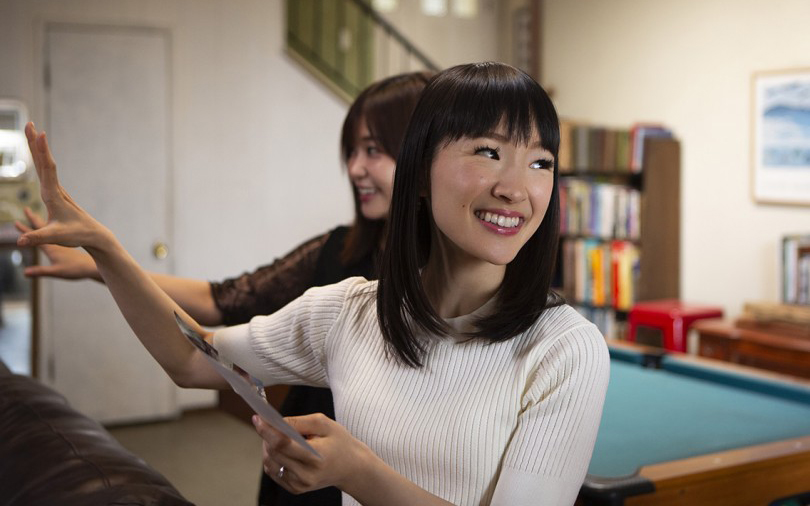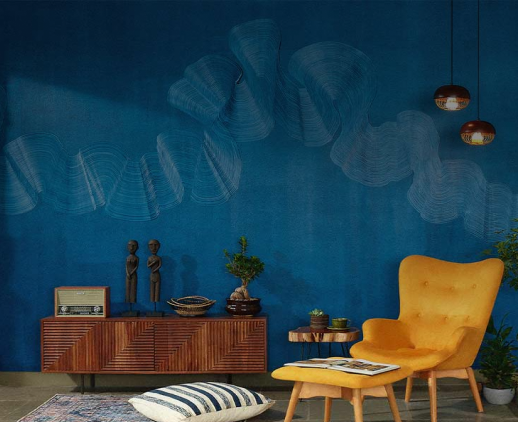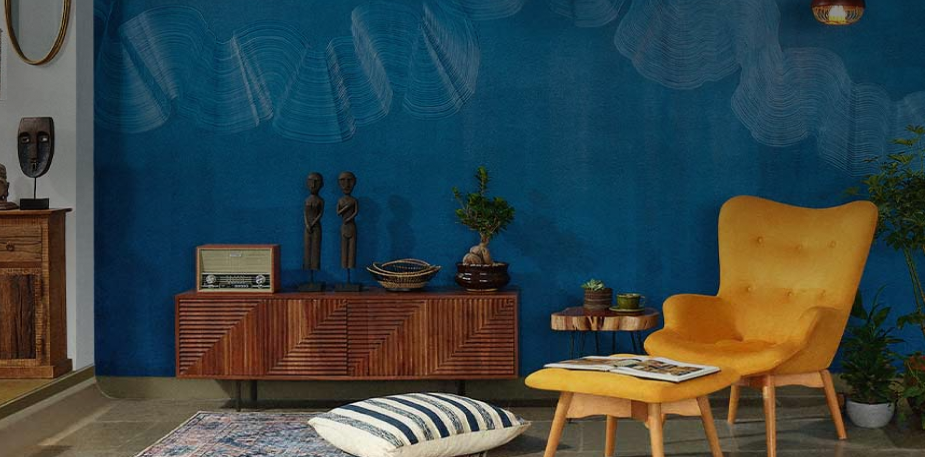Get your home interior design budget estimate
A maximalist tries Marie Kondo’s life changing magic. But, does it work?

We got a self-confessed ‘lover of stuff’ to binge watch Tidying Up with Marie Kondo. Read on to find out what happened next
I’ve always admired the cerebralism of minimalist living spaces, but what I love is luxuriating in a home overflowing with furniture, books and objets d'art from different eras and schools of design - coming together to collectively demonstrate an OTT exuberance towards living and decorating. So, for a maximalist like me, binge watching the eight episodes of Netflix’s Tidying up with Marie Kondo was jarring, to say the least.
Aware of the Cult of Kondo since the 2014 English language release of her book The Life-Changing Magic of Tidying Up, I knew that the Japanese organisation expert has millions of fans that swear her methods changed their lives. But I couldn’t claim membership in the Kondo Club because a) living in a constant and obsessive state of tidying does not seem pleasant and b) her method’s defining principle is the opposite of my earlier outlined decorating philosophy. Still, I decided to give the show a shot.
Kondo’s first tenet, part of what she calls the KonMari method, is to get rid of items that don’t ‘spark joy’. If you don’t feel a frisson of excitement when you pick up any of your possessions, you’re supposed to let them go. That works if you’re the sort who mindlessly buys every second thing you encounter, in which case you have a bigger problem than clutter. Most of the participants on this show had reached a hoarder-level state of possessions—one family threw out 150 trash bags full of stuff—and certainly, in those cases, clearing up years of unattended clutter can have cathartic consequences.
I just couldn’t get behind the idea of getting rid of items that don’t spark instant joy. I have some things I like, and some I love; some were purchased on a whim while others were carefully considered choices. None of them are dispensable just because they don’t bring excitement for that one moment in time when I’m analysing their use. This exercise just highlighted one of my biggest problems with the KonMari method—the unnecessary waste.
An important question that remains unanswered is what happens to items that don’t ‘spark joy’? There’s no thought given to how one can repurpose or reuse them, considering our planet is seriously burdened by gazillions of tonnes of trash causing all sorts of environmental catastrophes. Also, who’s to say people are not going to fall off the wagon once the heady feeling of a clutter-free home wears off, and go out and buy more?
The KonMarie method is useful for a subset of the population that’s overwhelmed by a home that’s full of possessions they have no use for, and no place for the things they do need or use. If you’re living mindfully, even if that’s in a home that’s a little crowded by Kondo standards, trust me, you’re doing just fine.
However, that’s not to say I learnt nothing. Kondo has some great organisation hacks that everyone can benefit from:
1. Showing gratitude: This might seem woo-woo, but bear with. Kondo advocates thanking items you’re letting go of; in one episode she says that dumping a shirt might teach us we don’t particularly like wearing shirts. That seems a long-winded process to realise we don’t like something, but showing gratitude, even to inanimate objects, can make us more mindful and aware of how we consume and what we really need.
2. Piling it up: Creating a big heap of all your clothes is great advice—we can analyse exactly what we have, be reminded of pieces that were misplaced or forgotten, can avoid buying doubles, decide what no longer works or fits, and probably come to the realisation that we don’t need more clothes.
3. Stacking upright: This is one of Kondo’s more genius suggestions—instead of laying items flat or horizontally in shelves and drawers, arrange them upright or vertically, so every time you open a drawer, you can see what’s in there at first glance.
4. Get boxing: Buy or repurpose small, open boxes and arrange them into drawers that will hold many small items (makeup, kitchen tool, etc) so you can categorise items by type. Instead of bags, store things like papers, decoration and toys in plastic bins, which can be stacked easily and neatly.
5. A place for everything: If there’s just one Marie Kondo takeaway you need, it is to designate a place in your home for each item. That way, everything has a place to go to after you’ve finished using it, and clutter will always only be temporary.
Parizaad Khan Sethi is a lifestyle writer and editor based in New York

Get Started with your interior design journey with us!
Speak to our design professionals
What’s the status of your home possession?
What’s the condition of your home/space?
Will you be living in your space during the renovation?
 Previous Question
Previous Question
Is your interior design budget over 4 lakhs?
 Previous Question
Previous Question
Book next available appointment slots with our experts!
Please Select Date and Day
 Previous Question
Previous Question

Something went wrong!
We were unable to receive your details. Please try submitting them again.

Appointment Scheduled!
Thank you for giving an opportunity to Asian Paints Beautiful Homes Service! Our Customer Experience Specialist will get in touch with you soon.
Appointment Date & time
Thank You!
Our team will contact you for further details.
What’s the status of your home possession?
What’s the condition of your home/space?
Will you be living in your space during the renovation ?
 Previous Question
Previous Question
Is your interior design budget over 4 lakhs?
 Previous Question
Previous Question
Book next available appointment slots with our experts!
DEC 2023
Please Select Date and Day
 Previous Question
Previous Question

Something went wrong!
We were unable to receive your details. Please try submitting them again.

Appointment Scheduled!
Thank you for giving an opportunity to Asian Paints Beautiful Homes Service! Our Customer Experience Specialist will get in touch with you soon.
Appointment Date & time
17 Oct 23, 03.00PM - 04.00PM







































